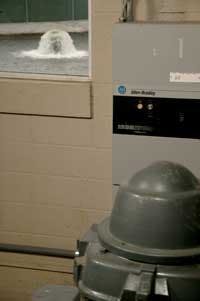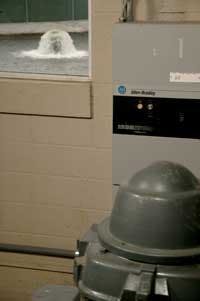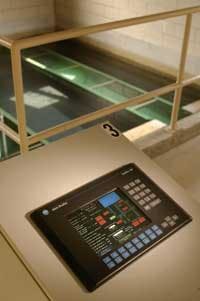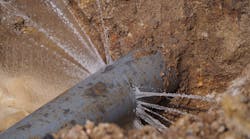Emerging water/wastewater challenges, including expanding regulations, aging infrastructures and the need for increased operational efficiency, are forcing utilities to alter their traditional methods of operation. Today’s utilities must be more aggressive in applying new technologies capable of delivering immediate value and long-term returns. This trend is driving the need for information-enabled systems that can help water treatment facilities better manage plant assets and make better operational decisions.
A key solution in recent years to meet operational efficiency requirements is the expanding use of automation, including more remote monitoring and computer-controlled devices, such as SCADA systems and intelligent controllers. Utilities increasingly need to understand what is happening within a treatment plant. At a minimum, plants need access to relevant, timely data in order to make quick, accurate decisions.
There’s also a need for more automated functionality - that is, technology capable of collecting real-time information and feeding it back to a control system that, in turn, can positively alter the process.
Power of Wireless
Wireless technology is evolving rapidly, giving utilities an opportunity to improve information flow and reduce operational costs. Wireless systems provide significant advantages over wired systems in certain applications, particularly those involving long-distance communication, as is common in water distribution systems and wastewater collections systems. In these instances, wireless networking reduces installation costs, adds flexibility, eases data collection issues and can increase site security.
Wireless SCADA systems can help plants gather information about processes and assets in remote locations where hard-wired or manual information gathering are too costly or time-consuming to implement. Wireless technology bandwidth and speeds are increasing and system developers are addressing network security concerns to deliver significant value in a wide range of highly dispersed monitoring applications.
As infrastructure security issues continue to take on new urgency, water treatment plants, for example, will be required to have access to real-time data on the quality of finished water going from the plant to customers. To protect critical assets against sabotage or contamination, all utilities will benefit from real-time systems capable of monitoring and controlling these assets around the clock. While numerous systems are already secure, many more are not and will have to be upgraded and reinforced.
Strategic Maintenance
The continued aging of water wastewater infrastructure will remain a major issue for treatment plant maintenance and production managers who need to provide critical maintenance functions such as comprehensive diagnostics, calibration, real-time monitoring, and auditing equipment. In recent years, advances in information gathering techniques and a staggering array of new tools are helping to dramatically improve maintenance functions and optimize performance. The key for utility managers is to invest in technology and process improvements and start using them in critical areas where they know problems exist.
Strategic maintenance − a mix of predictive, preventive and reactive maintenance strategies based on a facility’s needs and resources -- is gaining the attention of utilities. By applying the right activities to the right asset at the right stage in its life cycle, utilities maximize asset performance. In other words, the physical and functional maintenance requirements are taken into account for the life of the asset as measured by performance, reliability and maintainability. This strategic approach helps plants budget for maintenance, determine asset reliability expectations and develop a replacement schedule for capital equipment and their automation components.
The best approach for many plants will be to implement asset management initiatives in phases, starting with the most critical equipment and systems. This phased approach is particularly true in smaller utilities where limited investment resources require acting with restraint - starting small and adding new technology when the time is right. The reality is that good maintenance techniques will result in a reduction of overall operating costs.
Automating Energy Efficiency
While energy consumption is the largest cost for water and wastewater treatment plants, it has historically been considered an “acceptable, necessary expense” when faced with the choice between overall plant efficiency and operating the plant within compliance permits or matching flow demands. That is changing, however, as tighter budgets and rising energy costs are forcing utilities to alter their methods of operation. At the same time, new ways of managing energy consumption and water quality through sophisticated power monitoring tools and advanced control algorithms have emerged, providing the information plants need to identify ways to reduce energy. In short, effective energy management is no longer an option; it is a strategic utility necessity.
Within the water/wastewater industry, pump and compressor motors account for the majority of total electricity used. By installing smarter, more automated devices in the power flow, especially at the point that power is converted to mechanical energy, plants can obtain better data and, in turn, achieve better energy management. The good news is that while electricity is the largest single cost for most plants, it also offers the greatest opportunity for saving.
To further help utilities, new advanced motor management solutions are capable of yielding big results. For example, variable speed drives can significantly reduce the amount of energy used in the treatment processes, particularly ones that involve blowers or pumps with changing demand requirements. Other power optimization tools, such as energy-efficient motors and gears, motor controllers and software, can deliver immediate, measurable bottom-line savings without jeopardizing water quality.WW
About the Author:
Jim Turner has been with Rockwell Automation for more than 15 years and has led the company’s water/wastewater initiative since 2002. The bulk of his experience at the company was spent designing automation systems for municipal water and wastewater systems. Prior to joining Rockwell, Turner worked in the control systems department of US Filter. Turner holds a degree in electrical engineering from Auburn University.





